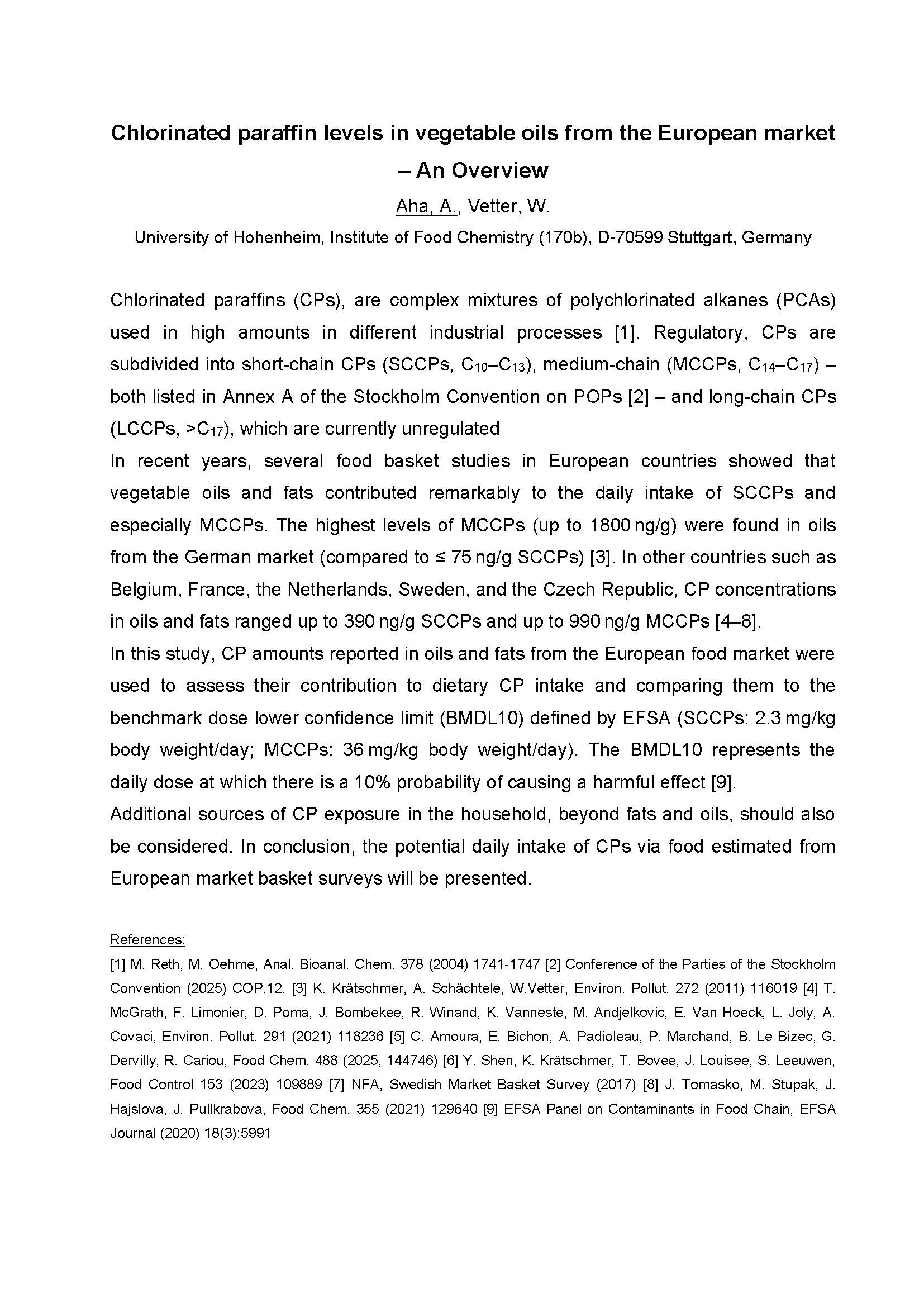Chlorinated paraffins (CPs), are complex mixtures of polychlorinated alkanes (PCAs) used in high amounts in different industrial processes [1]. Regulatory, CPs are subdivided into short-chain CPs (SCCPs, C10–C13), medium-chain (MCCPs, C14–C17) – both listed in Annex A of the Stockholm Convention on POPs [2] – and long-chain CPs (LCCPs, >C17), which are currently unregulated.
In recent years, several food basket studies in European countries showed that vegetable oils and fats contributed remarkably to the daily intake of SCCPs and especially MCCPs. The highest levels of MCCPs (up to 1800 ng/g) were found in oils from the German market (compared to ≤ 75 ng/g SCCPs) [3]. In other countries such as Belgium, France, the Netherlands, Sweden, and the Czech Republic, CP concentrations in oils and fats ranged up to 390 ng/g SCCPs and up to 990 ng/g MCCPs [4–8].
In this study, CP amounts reported in oils and fats from the European food market were used to assess their contribution to dietary CP intake and comparing them to the benchmark dose lower confidence limit (BMDL10) defined by EFSA (SCCPs: 2.3 mg/kg body weight/day; MCCPs: 36 mg/kg body weight/day). The BMDL10 represents the daily dose at which there is a 10% probability of causing a harmful effect [9].
Additional sources of CP exposure in the household, beyond fats and oils, should also be considered. In conclusion, the potential daily intake of CPs via food estimated from European market basket surveys will be presented.
